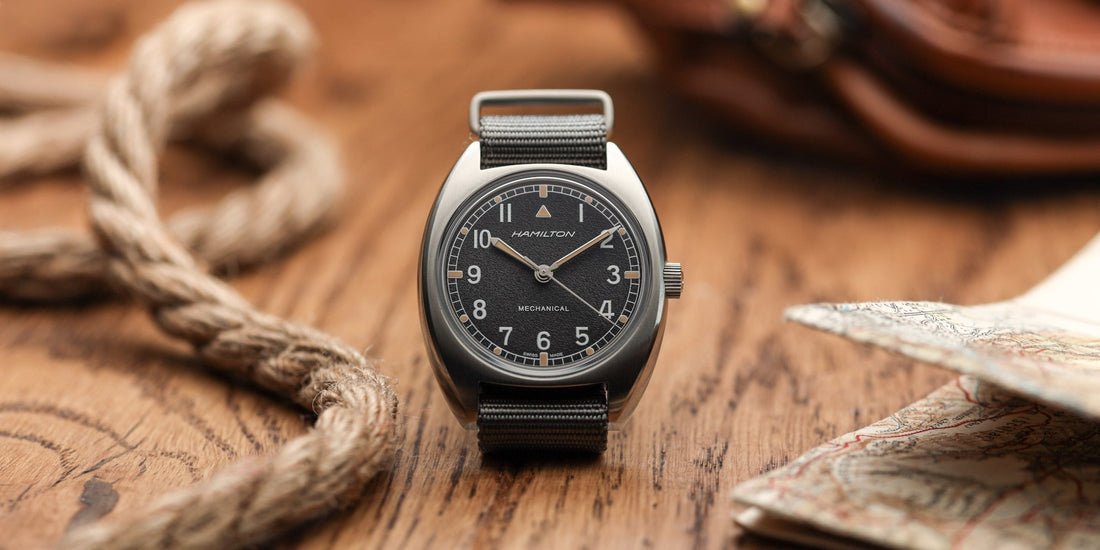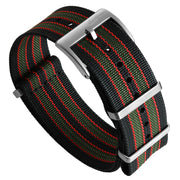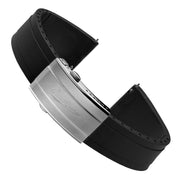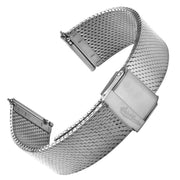Between rising tariffs, inflation, and a post-pandemic market correction, the U.S. watch industry finds itself at a crossroads. The boom of 2020 and 2021—fueled by stimulus checks, lockdown boredom, and a sudden collective obsession with GMTs—has cooled off. The dust has settled, and what remains is a market trying to redefine its “new normal.” But is that a normal plateau… or the start of a slow decline?
To get a better sense of where things are headed, I spoke with someone who lives and breathes the watch industry: Marc Frankel, owner of the independent retailer Long Island Watch. From behind the counter to the YouTube comments section, Frankel has built a reputation for honesty, value, and double-wristing like a champion.
His customer base? “Typically, the watch enthusiast,” he says. “Some might say hobbyist. I grew up on internet forums before social media was really a thing.” But even this core demographic is changing. Buyers have become more discerning, more attuned to value, and more focused on modest case sizes. “Smaller original designs—40s, 38s, 36s—those are on most people’s minds. Divers still lead the pack, though.”
The Story on U.S. Watch Tariffs
But 2024 threw a wrench into the movement—literally. The newest wave of tariffs on imported goods, particularly from China, has left small business owners scrambling. And Frankel’s first reaction? “Oh sh*t, is this really happening?”
Unlike some retailers who panic quietly into spreadsheets, Frankel has been transparent. His YouTube videos on the subject offer a behind-the-scenes view of what these changes mean—not just for his customers, but for the watch industry as a whole. “On the retail side, I figured my vendors and I would figure it out,” he says. “But on the OEM side? Islander is the lifeblood of the business. For my costs to more than double is… untenable.”
So far, Frankel has chosen to eat the extra costs. “Some shipments arrived when the new tariffs were in place, and I’m just absorbing those. It doesn’t feel right to raise prices because a couple shipments came in high. My customer base has stuck with me, some for 10 to 15 years—it wouldn’t be right to stick it to them immediately.”

That decision isn’t without sacrifice. Vendors have increased their pricing. Import fees have ballooned. And depending on the country of origin (C/O), the tariff impacts vary wildly. “As it stood before the pause, anything from China was at 145%. Japan? 24%. Swiss? 31%,” Frankel explains. “The movement—typically Japanese in my watches—is taxed lower, but still, it adds up fast.”
The elephant in the room is sourcing. Would Islander consider moving production? It’s complicated. “I’ve got great relationships with my vendors. We’re friends. I trust them. That’s not easily replaced. But yeah, I’ve considered it. I know other owners who are exploring options too. Still—imagine spending all that money to re-shore to a different country and BAM, a new tariff falls out of the sky.”
So, what does this all mean for consumers?
“It’s going to be impossible to get the same value you had pre-tariff,” Frankel warns. “No matter where you source from, it’ll be tariffed equally. Would people give up their buying? No. Would they curtail it? Most certainly. It’s not a necessity.”

In the higher-end market, he expects more buyers to shift toward pre-owned and gray market options. “31% of $8,000 is a lot different than 31% of $1,000,” he says with a laugh that feels just a little too real. “There will be a reduction in new-item spending across the board. And not just watches—every industry.”
Some believe adversity breeds innovation. Frankel is skeptical. “That’s the idea, but I don’t see it happening. We gave up the tooling and know-how over 50 years ago. Could we reclaim it? Sure. But would today’s workforce want these kinds of jobs? I’m doubtful.” Still, he notes the rise of American-made ambition in brands like Colorado Watch Company, who are attempting the unthinkable: manufacturing at scale in the U.S.
The tariffs could, in a roundabout way, level the playing field. “If the de minimis exemption disappears, it makes USA sellers just as attractive as overseas sellers,” Frankel explains. “So, we stand to do better against them.” But he’s not shouting “Buy American” from the rooftops. He’s just keeping it real. “I won’t say ‘panic buy.’ That is never the answer. Examine your own position as a consumer, see what you can afford, and make an informed decision.”

For now, it’s business as usual at Long Island Watch. Orders are still coming in. OEM releases are still on the calendar. And Marc Frankel still shows up on YouTube with the calm, collected energy of a man who’s done this for 20 years and isn’t about to stop now.
“I feel guarded optimism,” he admits. “145% is ridiculous. I can’t see that happening. But the current 30%? I can see that sticking around. Don’t forget—the 2017 Trump tariff on China is still in effect. That was never repealed. So, when we hear ‘30%,’ that’s just the new tariff. The old one is still there… and then there’s just the standard wristwatch tariff on top of that.”
So, what’s next? Deals? Doom? Divers with 34mm cases?
As Frankel puts it: “Time will tell.”
How have U.S. watch tariffs affected your watch buying or collecting experience? Share your thoughts in the comments below.








